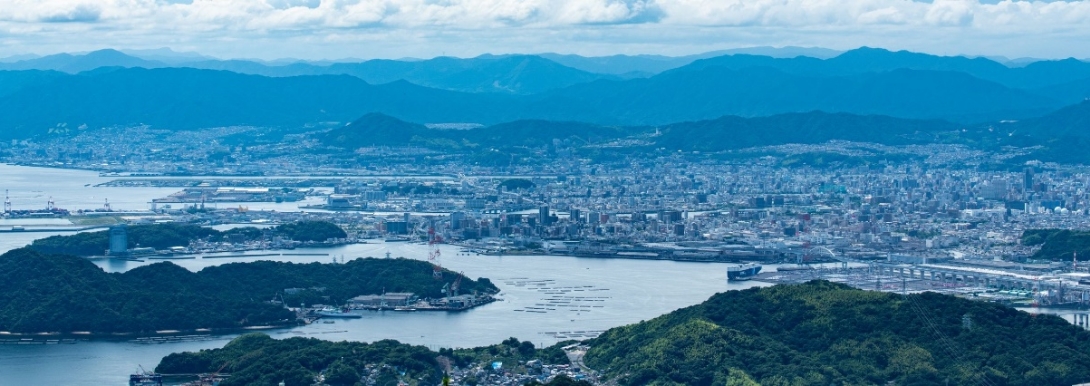
Here are some of the various programs, etc. of the G7 Hiroshima Summit, which was held in Hiroshima, an international city of peace and culture blessed with a rich natural environment, for three days from May 19 to 21, 2023.
Events and Sessions
Events and Sessions

Prime Minister Kishida and Mrs. Kishida welcome the G7 leaders and their spouses
at the Hiroshima Peace Memorial Museum.
On May 19, Prime Minister Kishida Fumio and his spouse, Mrs. Kishida Yuko, welcomed the G7 leaders and their spouses, who were visiting Hiroshima for the G7 Hiroshima Summit, at the Hiroshima Peace Memorial Park in Hiroshima City. They then visited the Hiroshima Peace Memorial Museum, left their names and messages of peace in a visitor’s book and participated in the wreath-laying ceremony at the Cenotaph for the Atomic Bomb Victims.

The G7 leaders sign the guestbook
at the Hiroshima Peace Memorial Museum.

The G7 leaders offer floral wreaths to Cenotaph
for the Atomic Bomb Victims
in Hiroshima Peace Memorial Park.
On May 19, following the summit meeting at the main venue, the Grand Prince Hotel Hiroshima, a stand-alone statement focused on nuclear disarmament as the G7, “G7 Leaders Hiroshima Vision on Nuclear Disarmament,” was released.

Session 1 (Working Lunch)
at the Grand Prince Hotel Hiroshima

Group Photo
at the Grand Prince Hotel Hiroshima
On the afternoon of May 19, the G7 leaders visited the Itsukushima Shrine, a UNESCO World Heritage Site on Miyajima Island, aboard the SEA SPICA, a high-speed sightseeing cruiser. They discussed diplomacy, security and other issues over a working dinner at the island’s historic “Iwaso” inn, while enjoying a variety of Japanese cuisine using abundant ingredients from various parts of Hiroshima Prefecture and the Seto Inland Sea, as well as Japanese sake and domestic wine, mainly produced in the region.

SEA SPICA operated by Setonaikaikisen Co., Ltd.

The G7 Leaders on board SEA SPICA

The G7 leaders are explained by Mr. Nozaka,
Chief Priest of the Itsukushima Shrine.

Group Photo
at the Itsukushima Shrine

The G7 leaders enter the venerable “Iwaso” inn.

Session 3 (Working Dinner) at Iwaso
On May 20, the G7 leaders were joined by the leaders of the eight invited countries and seven international organizations to discuss issues such as food, health, development, gender, climate, energy and the environment. On May 21, the final day of the three-day summit, the president of Ukraine joined the G7 leaders as a guest, and the meeting between the G7 leaders and the president of Ukraine and other meetings were held.

Session 6 (G7 + Heads of invited countries and heads of international organizations)
at the Grand Prince Hotel Hiroshima

Group photo
(G7 + leaders of invited countries and heads of
international organizations)
at the Grand Prince Hotel Hiroshima

Session 8 (G7 + Ukraine)
at the Grand Prince Hotel Hiroshima

Group Photo (G7 + Ukraine)
at the Grand Prince Hotel Hiroshima

Japan-Ukraine Summit Meeting
at the Hiroshima International Conference Center
On May 20, Prime Minister Kishida and his spouse hosted a social event for the leaders of the G7 and invited countries, as well as the heads of international organizations and their spouses. As part of the hospitality, the guests enjoyed Japanese cultural and culinary delights, including a koto performance, a demonstration of Hiroshima Kagura (Shinto music and dance), and a Noh play.

A blend of Japanese and Western cuisine using a rich variety of ingredients from all over Japan
at the Grand Prince Hotel Hiroshima

Prime Minister Kishida’s G7 Presidency Press Conference
at the Hiroshima Peace Memorial Park
On May 21, after the conclusion of the G7 Hiroshima Summit, Prime Minister Kishida, who chaired the meeting, demonstrated to the world the G7’s determination to safeguard peace and prosperity and expressed their shared commitment to work towards a “world without nuclear weapons”.
Partners’ Program
Partners’ Program
At the G7 Hiroshima Summit on May 19-21, the spouses of G7 leaders and invited countries deepened their understanding of Hiroshima’s history and traditional culture.
On May 19, after visiting the Peace Memorial Museum and laying flowers at the Cenotaph for the Atomic Bomb Victims, Mrs. Kishida took the spouses of the G7 leaders to Ueda Soko Ryu Wafudo, a historic tea house in Hiroshima, and hosted a luncheon. Guests enjoyed seasonal kaiseki cuisine using seasonal ingredients from Hiroshima, with dishes and presentations featuring seasonal elements. They also enjoyed a tea ceremony performed at the tea room by the grandmaster of Ueda Soko Ryu.

Tea ceremony performed by the grandmaster of Ueda Soko Ryu,
a warrior class school of chanoyu,
in the tea room of the Ueda Wafudo

Group photo at the luncheon hosted by Mrs. Kishida
at the Ueda Wafudo
Mrs. Kishida and the spouses of the G7 leaders visited Miyajima aboard the SEA SPICA, a high-speed sightseeing cruiser. On the historic island, they visited Itsukushima Shrine and had lunch at the Miyajima Brewery, where they enjoyed a menu rich in local ingredients and freshly brewed beer specially prepared for the occasion. Before lunch, they enjoyed a demonstration of okonomiyaki on a teppan (iron plate) to experience Hiroshima specialties with all five senses.

Group photo of the G7 leaders‘ spouses
at the Itsukushima Shrine

Bugaku performance at the Itsukushima Shrine

Okonomiyaki demonstration
at the Miyajima Brewery

Luncheon at the Miyajima Brewery

Viewing the works of Hiroshima-born Okuda Genso and Okuda Sayume
at the Hiroshima Prefectural Art Museum
On May 21, Mrs. Kishida and the partners of the summit leaders and representatives of invited countries and international organizations visited the Hiroshima Prefectural Art Museum. After hearing explanations on lacquerware and maki-e lacquer decoration from a Living National Treasure, Mr. MUROSE Kazumi, the participants had the opportunity to experience maki-e painting and decorate sake cups with patterns. Finally, they enjoyed feeding carp, which are closely associated with Hiroshima, at the garden pond.

Maki-e experience taught by
Living National Treasure Murose Kazumi
at the Shukkeien Garden

Feeding the carp
in the Shukkeien Garden
Culinary Hospitality
Culinary Hospitality
The G7 leaders were treated to French and Japanese cuisine using ingredients from various parts of Hiroshima Prefecture and the abundant produce of the Seto Inland Sea. For beverages, Japanese sake and domestic wines, mainly from Hiroshima Prefecture, were offered and introduced.

Working Lunch on May 19

Working Dinner on May 19

Working Lunch on May 20

Social event and dinner on May 20
Gifts to G7 countries
Gifts to G7 countries
As a token of hospitality, gifts were presented to the G7 leaders by Prime Minister Kishida and to the spouses of the G7 leaders by Mrs. Kishida.
Gifts from Prime Minister Kishida to the G7 Leaders


A fountain pen with traditional lacquer art “Iromiyabi” (made by Sailor Fountain Pen Co., Ltd.)


A pair of Maki-e wine glasses or goblets (made by Kinjo Ikkokusai VII)
Gifts from Mrs. Kishida to the spouses of G7 leaders

Hiroshima Lacquer Art “Akebono”
(made by Mr. Naoya Takayama)

Kabuki Glasses (made by Santeplus Corporation)
Information Center
Hiroshima Information Center
(Food and Traditional Crafts)
The International Media Center, located at the Hiroshima Prefectural Sports Center, not only provided work space for the media, but also opened the Hiroshima Information Center, which showcased the charms and experiences of Hiroshima through topics such as food and traditional crafts.

The Hiroshima Prefectural Sports Center

The International Media Center
at the Hiroshima Prefectural Sports Center

Hiroshima Information Center
at the Hiroshima Prefectural Sports Center

The Hiroshima Information Center
at the Hiroshima Prefectural Sports Center
Food and Sake
Food and Sake in Hiroshima
Blessed with abundant nature, with the Seto Inland Sea to the south and the Chugoku Mountains to the north, Hiroshima is full of quality ingredients. Producers and consumers are close, and there are many excellent restaurants that make the most of fresh and varied ingredients. The city boasts Japan’s largest production of lemons and oysters, traditional Wagyu beef, a variety of fish from the Seto Inland Sea, and the soul food okonomiyaki. Hiroshima is also known as one of the top three sake brewing areas in Japan, where the soft water brewing method and power-driven rice polishers were developed, which are the cornerstones of ginjo (premium) sake brewing. There are 47 sake breweries throughout the prefecture, producing a wide variety of delicious sake.
Hiroshima is Japan’s largest producer of lemons and oysters.


Tasting of Hiroshima lemon and the new “Mizuki” citrus variety

grilled oyster


Tasting of grilled oysters
Hiroshima Wagyu
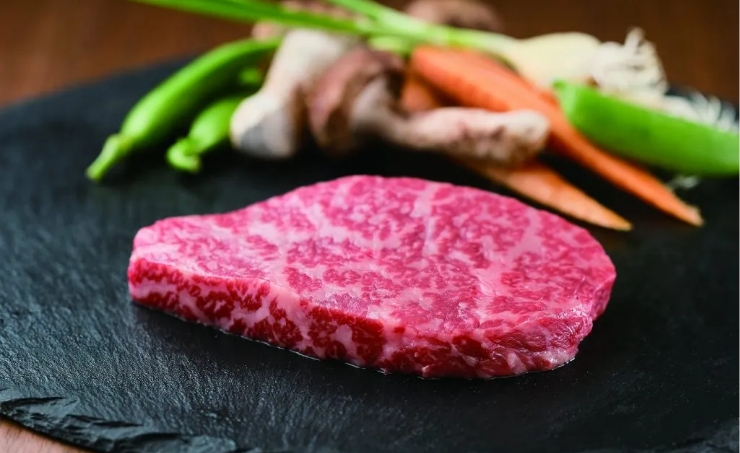
Hiroshima Wagyu
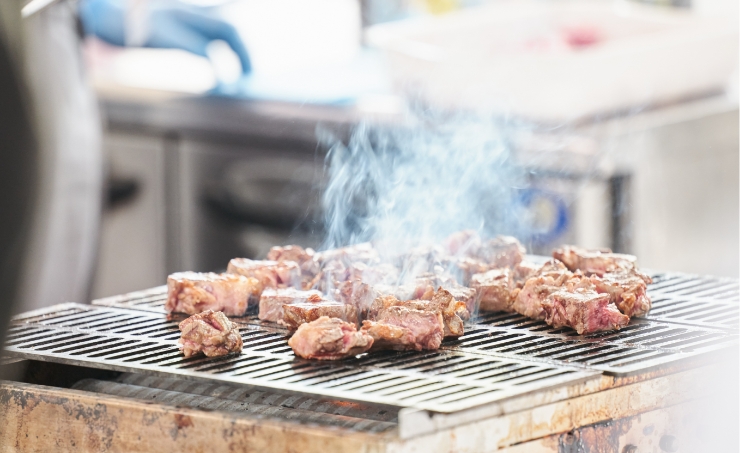
Grilled Hiroshima Wagyu beef
Fish from the Seto Inland Sea
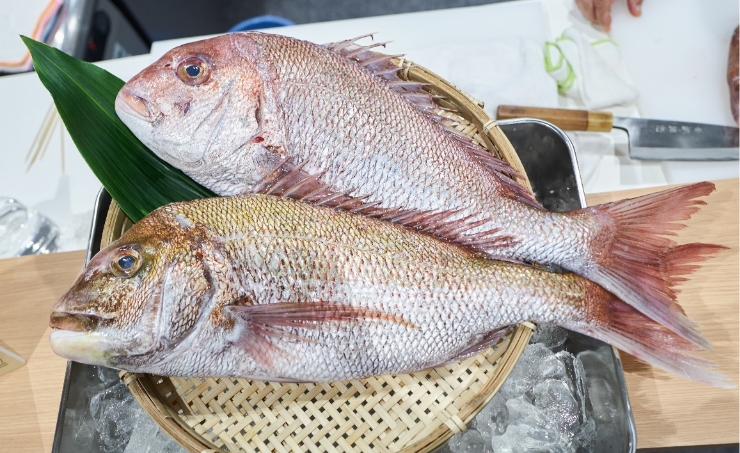
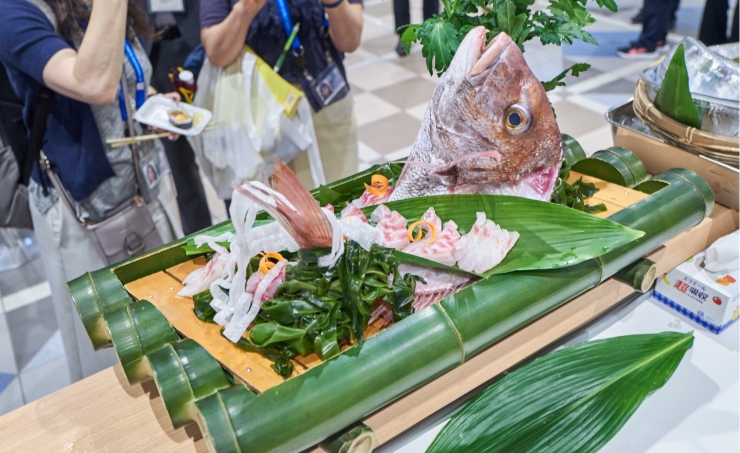

Fish cutting and preparation
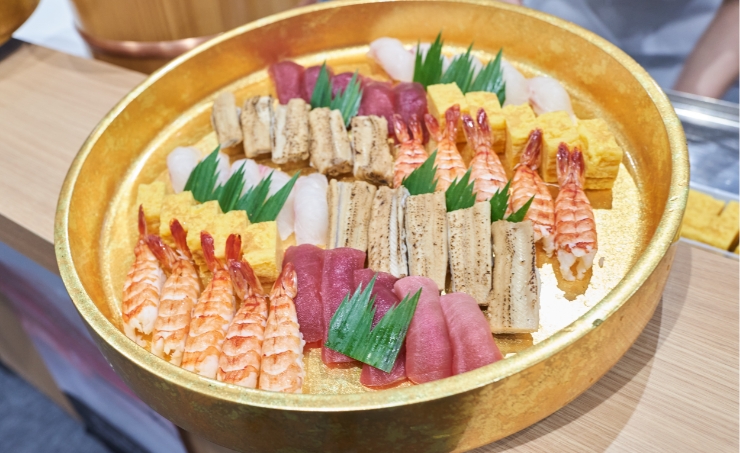
Sashimi and Sushi
savoury pancake with various ingredients
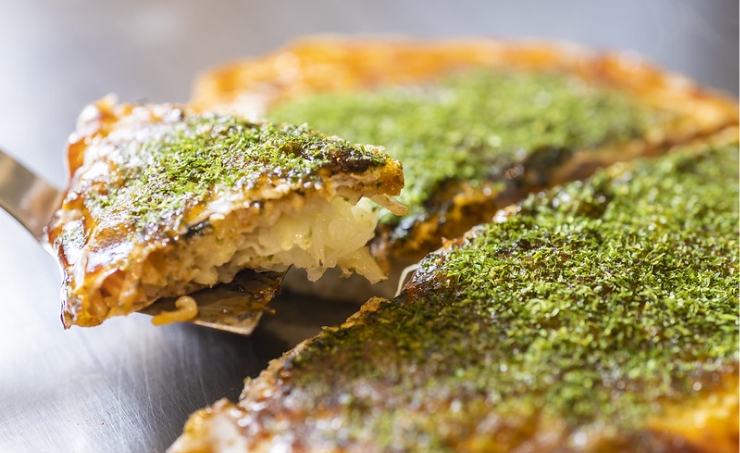
Okonomiyaki: a savory pancake with various ingredients
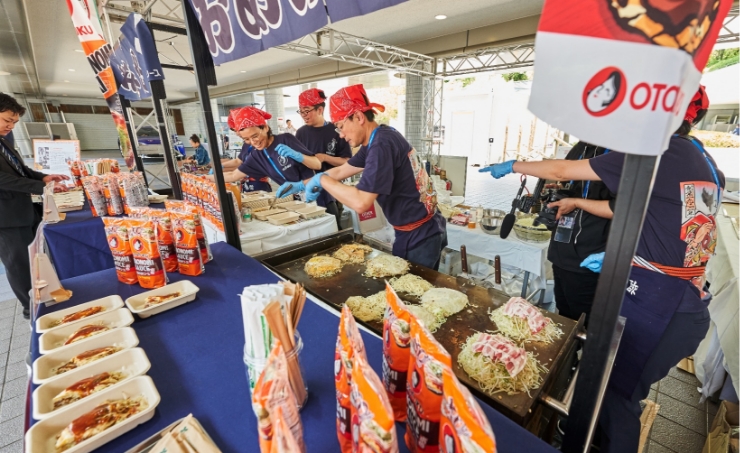
Okonomiyaki cooking
Sake brewing in Hiroshima, one of the top three sake brewing areas in Japan
Hiroshima sake is brewed using the “soft water brewing method.”
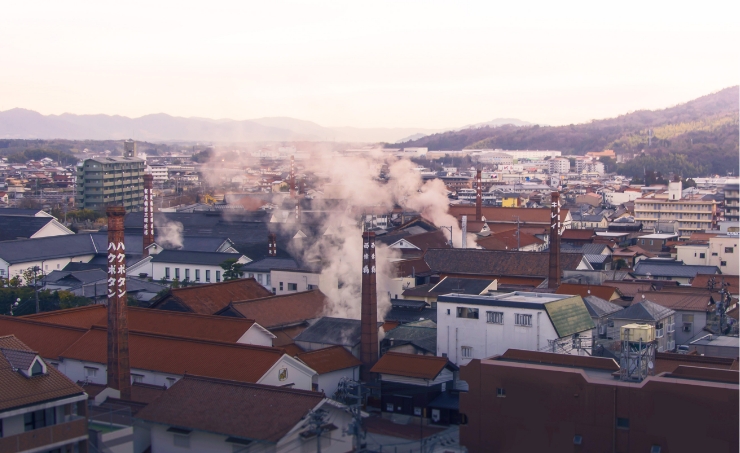
Sake Brewery Street Streets
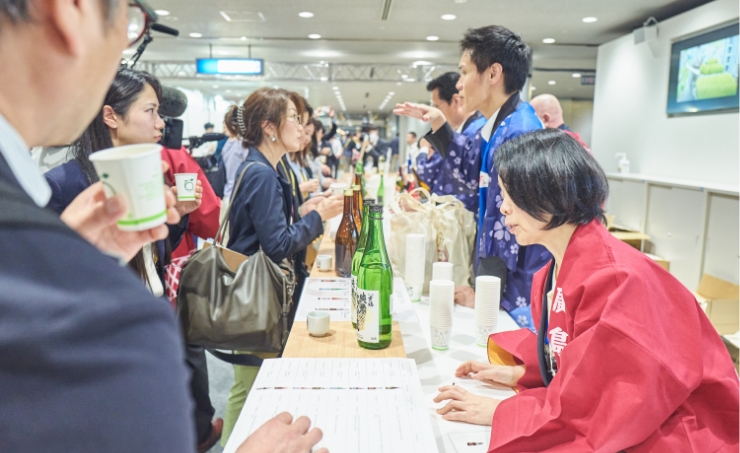
Sake tasting
Traditional Crafts in Hiroshima
Hiroshima is blessed with a climate of four distinct seasons, with the Seto Inland Sea to the south and the Chugoku Mountains to the north. Various traditional crafts that have been nurtured, handed down, and inherited in this rich natural environment, as well as handmade products by artisans using natural materials, bring warmth and joy to people’s lives. Although the products have changed as the people of each era use them in their daily lives, the reliable techniques and detailed, steady work of the craftsmen can still be seen today, just like the mountains and islands of Hiroshima.
Kumano Brush
The origin of Kumano brushes dates back to the end of the Edo period (1603-1868), and in 1975 they were designated as a national traditional handicraft. Various types of brushes, including painting brushes and cosmetic brushes, are produced in Kumano Town, which is now the largest brush production area in Japan. The process of sorting the bristles, thinning out the unwanted bristles, and carefully and evenly mixing the various bristles to make the brush heads is done by hand by skilled craftsmen. Currently, 15 traditional Kumano brush craftsmen are certified by the Minister of Economy, Trade and Industry.
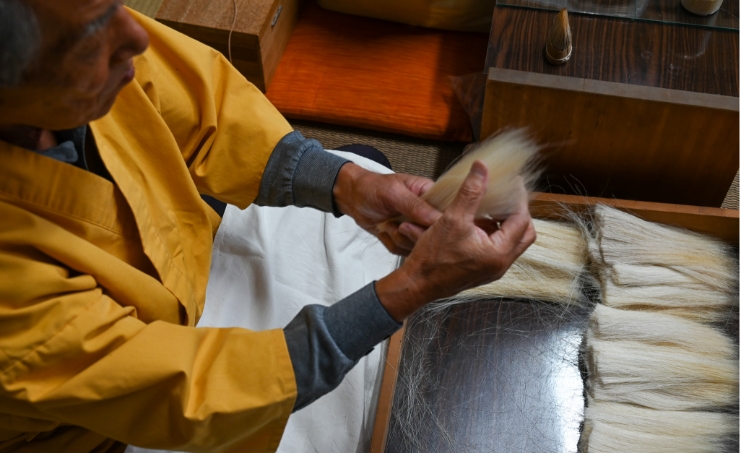
Kumano Brush Traditional Craftsmen’s Association
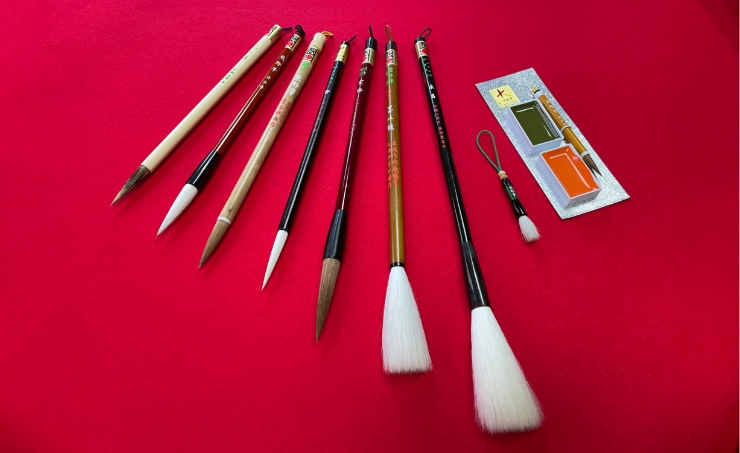
Kumano brush
Do-chu
The name “Do-chu” comes from the early Edo period (1603-1867) when Denbei Sasaki, a coppersmith in the service of Lord Asano of the Hiroshima domain, was called “copper mushi” (copper bugs) because of his zealous work ethic. Copper sheets are formed by beating them with a mallet, making the surface with the pattern of the mallet’s beating (tsuchime), and then smoked with straw and polished. Over time, the color deepens and becomes more lustrous.
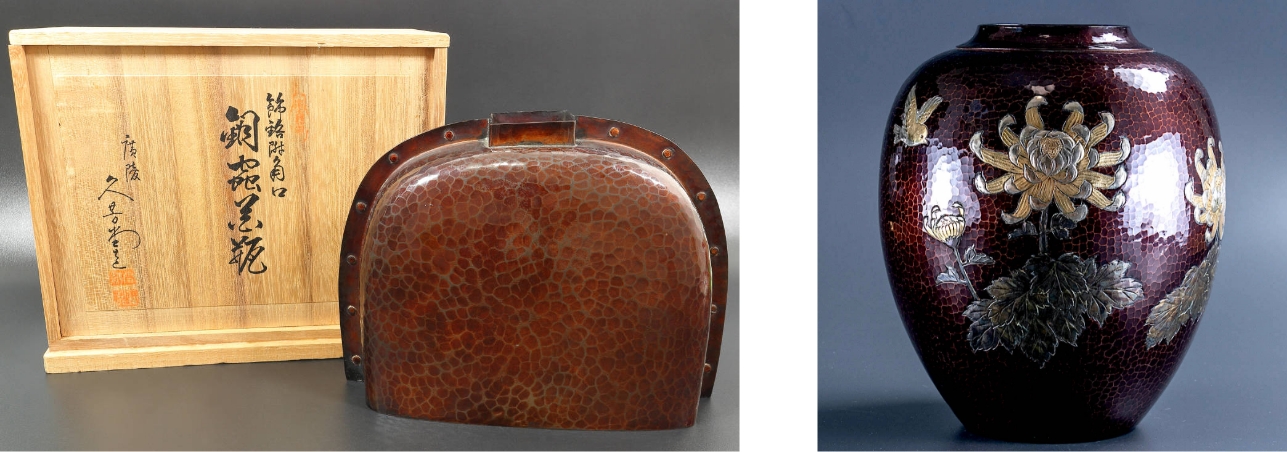
ITO Kyuhodo Co.,Ltd.
Hiroshima Lacquer Art
Instead of wood, a plaster mold is used and layers of fabric and lacquer glue are applied to form the base. The curve from the spout to the body is streamlined. This is the dry lacquer technique, which is characterized by its lightness, thinness, durability, and resistance to drying. In this sake server set, the “Katakuchi” server represents the dove, a symbol of peace, the tray represents the Seto Inland Sea, and the sake cups represent islands in the sea. The blue-black gradient (made using the technique called akebono lacquer with ro-iro finish) was inspired by the multilayered deep blue of the Inland Sea. The lacquer dries over a period of about 50 years. Over time, the urushi lacquer becomes denser and the blue more transparent. “Den” is alive.
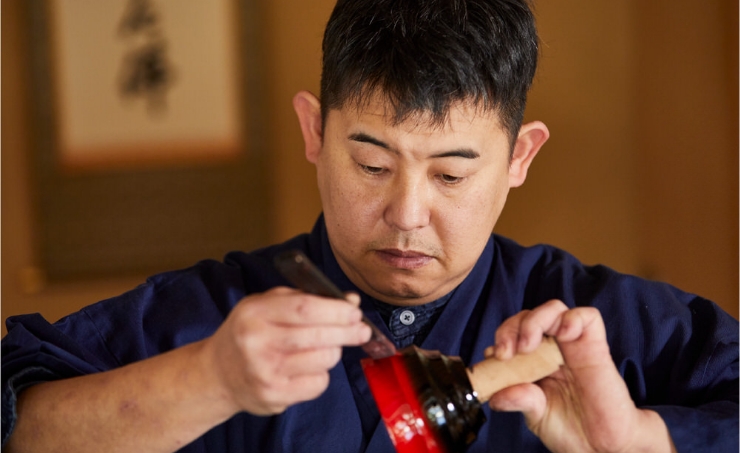
Hiroshima Lacquer Artist - Mr. Naoya Takayama
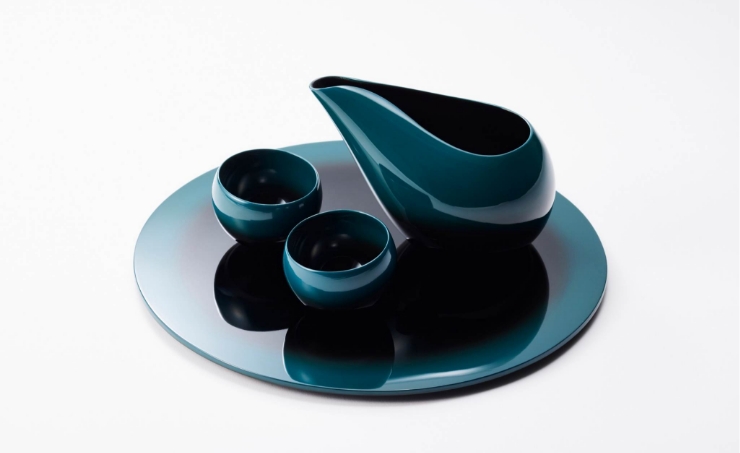
Miyajima-zaiku (Miyajima carving )
Miyajima zaiku: This is a style of wood carving said to have been introduced to Miyajima by Hakii Shosai of Koshu (now Yamanashi Prefecture) in the late Edo period. This craft is made by carving trays and confectionery containers (made by using a rokuro, or Japanese pottery wheel), and square trays and utensils (made by hollowing out wood) to make them more refined. Woods such as horse chestnut, zelkova, and cherry are used.
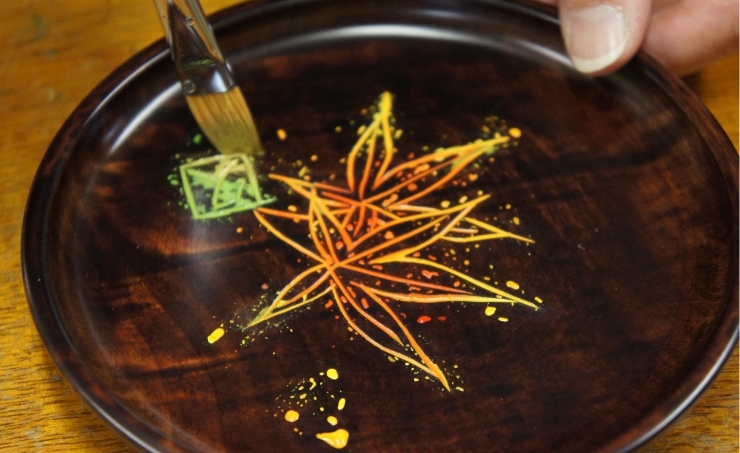
Miyajima Zaiku
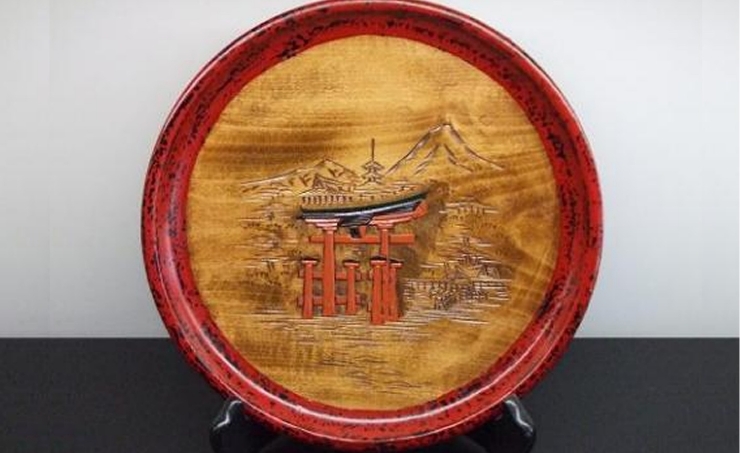
A tray
Video link(Prime Minister's Office)
Links to G7 Hiroshima Summit video: Cabinet Office website
G7 Hiroshima Summit - events at the
Hiroshima Peace Memorial Park
(19 May,2023)
G7 Hiroshima Summit - events at the
Hiroshima Peace Memorial Park
(21 May,2023)
G7 Hitoshima Summit: President Zelenskyy’s
visit to Hiroshima
(May 21,2023)
Retracting the footprints of the
G7 Hiroshima Summit
(May 19-21,2023)
Partners’Program
G7 Hiroshima Summit:Partners’Program
(May 19-20,2023)
G7 Hiroshima Summit:Partners’Program
(21 May,2023)
Photo courtesy of the Ministry of Foreign Affairs, Citizens Council for the Hiroshima Summit, Hiroshima City,Discover East-Hiroshima Inc.,Kumano Brush Cooperative Association, Kiyoshi Takayama, ITO Kyuhodo Co.,Ltd.


